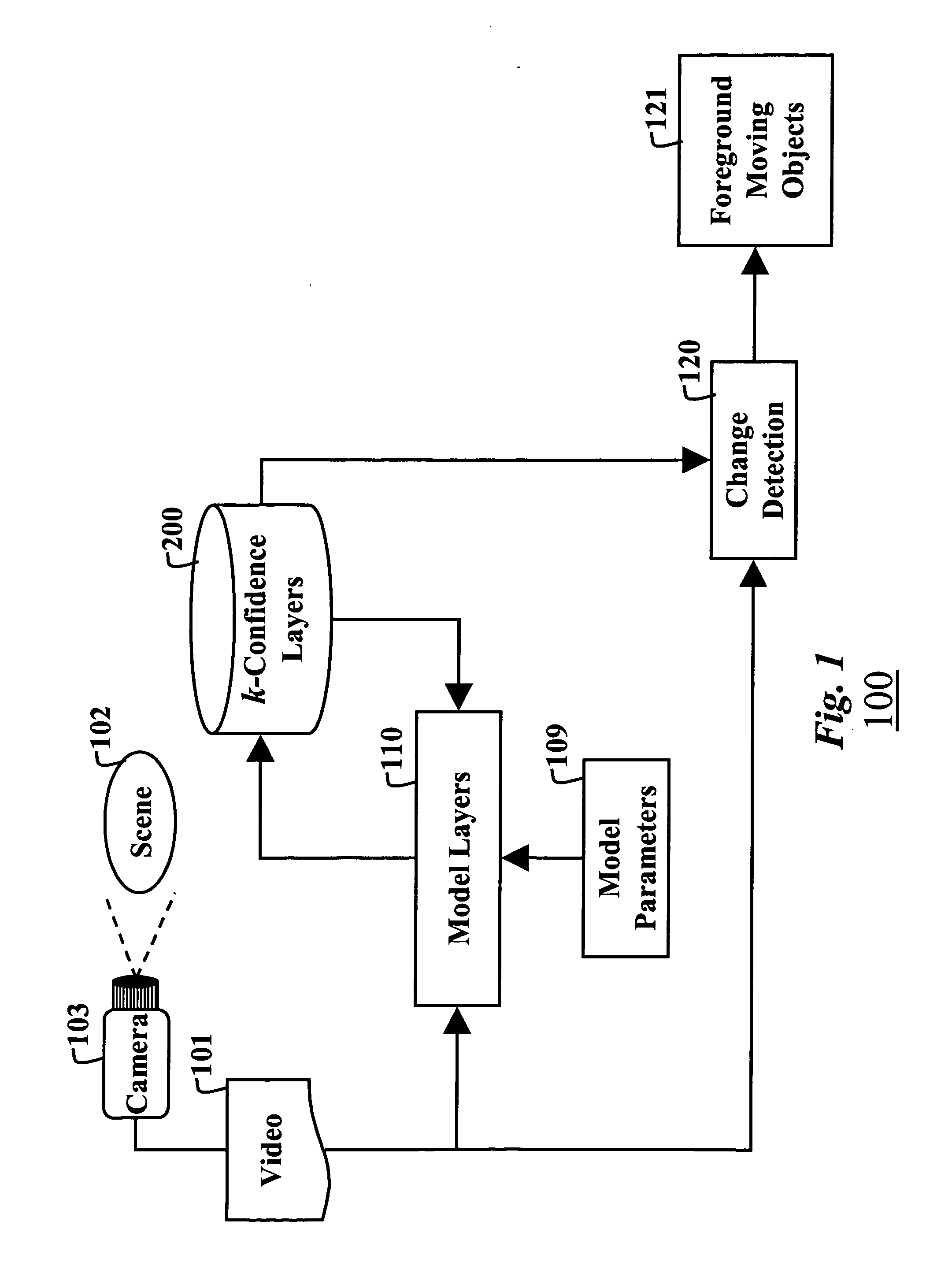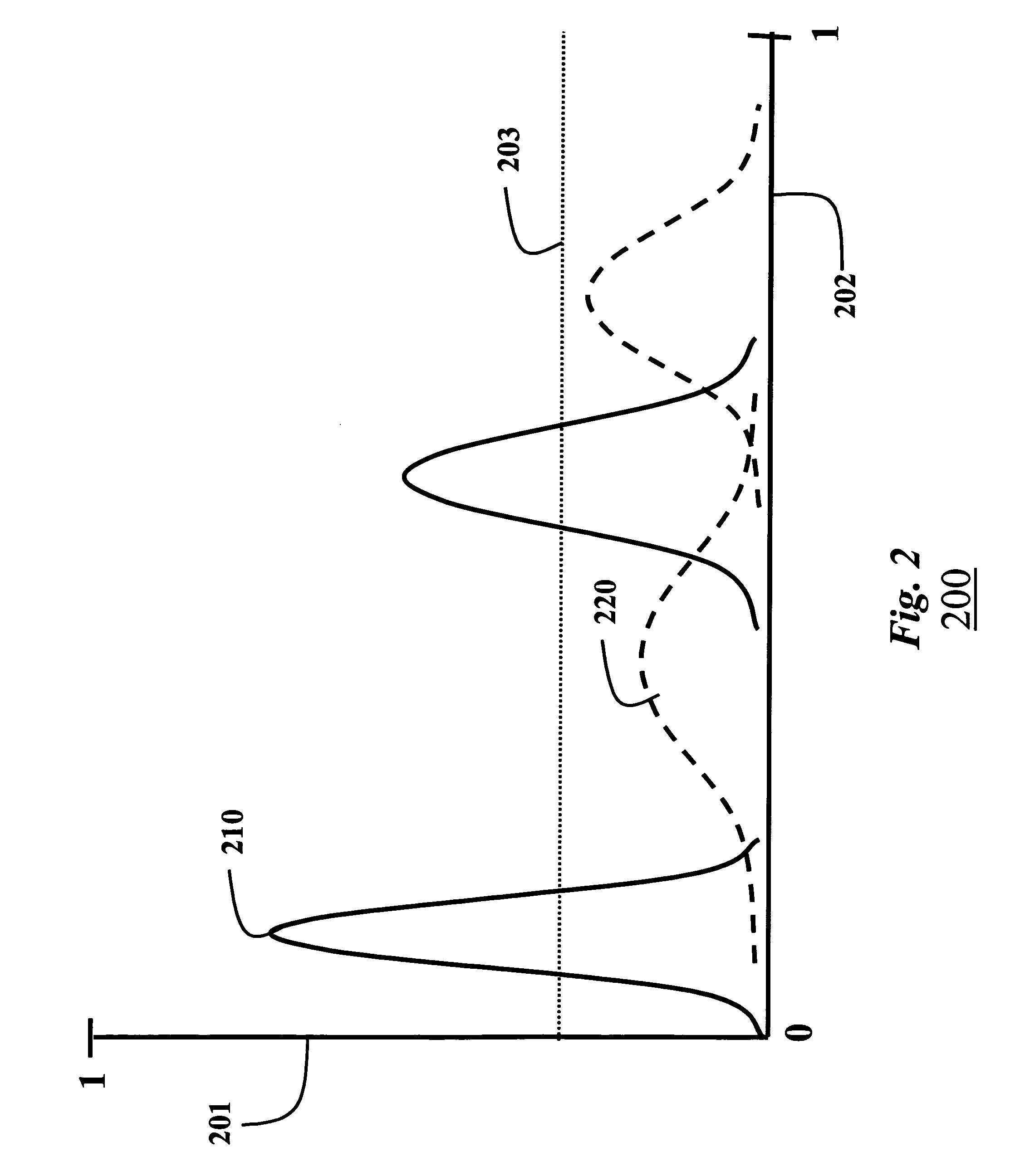Modeling low frame rate videos with bayesian estimation
a low frame rate video and video model technology, applied in image analysis, instruments, computing, etc., can solve the problems of difficult computer vision task of inability to use conventional object tracking methods, and difficulty in tracking objects in videos, so as to improve the effect of object tracking
- Summary
- Abstract
- Description
- Claims
- Application Information
AI Technical Summary
Benefits of technology
Problems solved by technology
Method used
Image
Examples
Embodiment Construction
[0027] Method Overview
[0028]FIG. 1 shows a method 100 according to our invention for modeling a scene 102 in order to detect moving objects in the scene. A video 101 is acquired of the scene 102 with a camera 103. For each pixel in each frame of the video, the scene is modeled 110 by multiple layers 200 of 3D multivariate Gaussian distributions according to model parameters 109. Each layer corresponds to a different appearance, i.e., color intensity, of the pixel over time. We perform our operations in a red, green, and blue (RGB) color space. Changes in the layers of the scene model are determined to detect 120 moving objects 121 in the scene. The detailed steps of the method are shown in FIG. 3, described below.
[0029] Model Layers
[0030]FIG. 2 is a simplified schematic of the multiple layers 200 of the model according to our invention. A vertical axis 201 indicates a confidence score, and a horizontal axis 202 a pixel color value, both normalized to a range [0, 1]. If a layer is...
PUM
 Login to View More
Login to View More Abstract
Description
Claims
Application Information
 Login to View More
Login to View More - R&D
- Intellectual Property
- Life Sciences
- Materials
- Tech Scout
- Unparalleled Data Quality
- Higher Quality Content
- 60% Fewer Hallucinations
Browse by: Latest US Patents, China's latest patents, Technical Efficacy Thesaurus, Application Domain, Technology Topic, Popular Technical Reports.
© 2025 PatSnap. All rights reserved.Legal|Privacy policy|Modern Slavery Act Transparency Statement|Sitemap|About US| Contact US: help@patsnap.com



